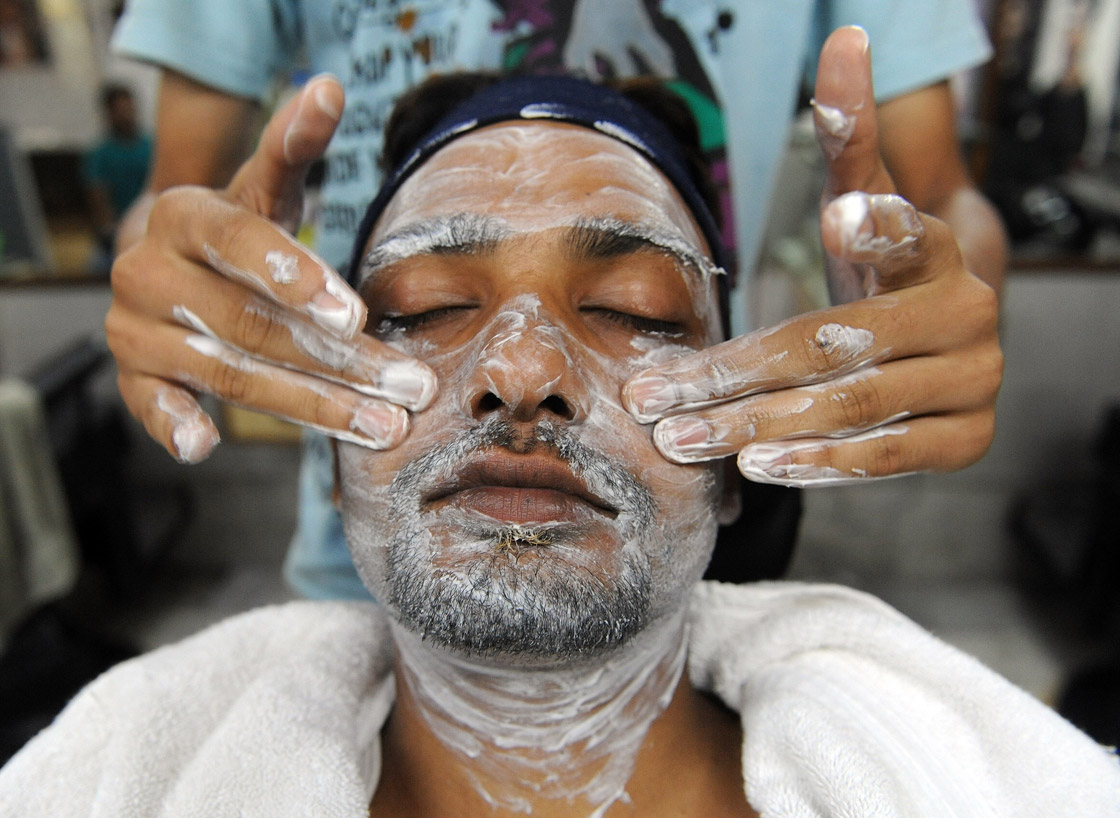TORONTO – A Canadian environmental organization is warning
men about toxic ingredients in their personal grooming products.

Environmental Defence has released a report detailing the prevalence
of toxins in commonly used products marketed toward men, including shaving
cream, deodorant, body wash and aftershave.
To date, most of the research done on toxic chemicals in
cosmetics has been geared toward women. However, the organization said the male
personal care industry is growing, worth more than $690 million in Canada
alone.
According to the U.S.-based Campaign for Safe Cosmetics, the average American man uses six
grooming products a day, which contain over 80 different chemicals, many of
which are absorbed into the skin, inhaled or ingested.
In their study, Environmental Defence tested 17 common male
grooming products recommended to them by men across Canada.
They found that of the 17, four contained probable human
carcinogens, five contained chemicals detrimental to reproductive health, and
ten contained artificial musks, some of which have been linked to male hormone
disruption.
The health issues that have been linked to these
hormone-disrupting chemicals include sperm damage, obesity, prostate cancer and
testicular cancer.
- ‘Shock and disbelief’ after Manitoba school trustee’s Indigenous comments
- Canadian man dies during Texas Ironman event. His widow wants answers as to why
- Several baby products have been recalled by Health Canada. Here’s the list
- ‘Sciatica was gone’: hospital performs robot-assisted spinal surgery in Canadian first
Health Canada requires that cosmetic products carry a list
of all ingredients – with the exception of ingredients in fragrance, considered
to be a “trade secret.” Fragrance mixtures may contain up to 3,000 ingredients,
listed simply as “fragrance” or “parfum.”
Other exceptions to Health Canada’s labelling regulation are
impurities that get into products through contamination and when a product
contains phthalates – a type of endocrine-disrupting chemical used to hold the
colour and scent in cosmetic products – which don’t need to be listed as an
ingredient.
Also, when a product makes a health claim – such as “treats
dandruff” – it is then governed under the Food and Drugs Act, which is not
subject to the same labelling regulations as cosmetics.
The organization said the results from their testing were
cause for concern, however unless a consumer has a specific allergy or
sensitivity, immediate effects from exposure to these toxins is not likely. The
problem, they said, is the long-term effect exposure to these toxins could
have.
The long-term effects haven’t been studied extensively and
researchers worry that these toxins, when mixed with other chemicals in our
environment, could create a “chemical cocktail” where it is nearly impossible
to know all of the effects it could have on humans.
The researchers also warn that these chemicals could be harmful
even at extremely low doses, turning the previous wisdom that “the dose makes
the poison” on its head.
In 2011, the Canadian government restricted the amount of phthalates
in children’s toys and child care products. However, phthalates are still commonly
found in cosmetic products such as nail polish and deodorant.
Environmental Defence makes several recommendations to the
cosmetic industry, governments and consumers, including enacting similar bans
as the ones in Europe, disclosing all ingredients in a product on the label and
online, and removing chemicals known, or suspected to be harmful, from
products.
To help consumers choose safer products, Environmental
Defence has published a list called the “Toxic Ten,” which lists ten substances
that can be found in Canadian products, many of which have been banned or
restricted in European markets.
The Toxic Ten
Triclosan: found
in products labelled antibacterial. Linked to endocrine disruption, allergies,
dermatitis and may have a depressant effect on the central nervous system.
Artificial musks:
found in products that contain fragrance. Linked to hormone disruption,
allergies, headaches, dizziness and immune system toxicity.
Parabens: found
in various cosmetics and moisturizers. Linked to increased risk of breast
cancer, immune system and organ toxicity, probable carcinogen.
Dibutyl Phthalates
(DBP): found in nail products. A known carcinogen, linked to genital abnormalities
and testicular cancer.
Petrolatum: found
in various skin, lip and hair products. Linked to skin irritation and
allergies. Could be contaminated with cancer-causing substances.
Formaldehyde
releasing agents: found in various hair products, moisturizers and
cosmetics. Linked to immune system toxicity and skin irritation. A probable carcinogen.
Sodium laureth sulphate
and sodium lauryl sulphate: found in products that lather like shampoo and
body wash. Linked to eye and respiratory tract irritation and is a possible
carcinogen. Can also affect the brain and nervous system, cause endocrine
system disruption and have reproductive effects.
Silicone chemicals:
found in various hair products, moisturizers and cosmetics. Detrimental effects
of the environment. Also possible carcinogen and reproductive toxin.
Coal tar derived
colours: found in hard dye. Linked to certain types of cancer, dermatitis
and severe facial oedema.
BHA and BHT:
found in makeup, moisturizers and some fragrances. Linked to carcinogenicity,
endocrine disruption, development toxicity and allergies.
For more on these substances and how to identify them on a
product’s ingredient list, click here.
Follow Heather on Twitter @heatherloney




Comments